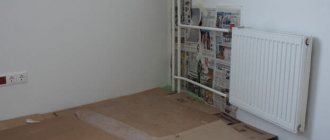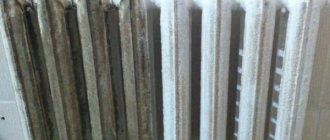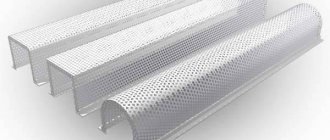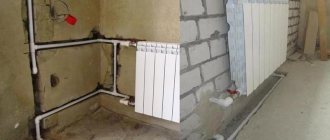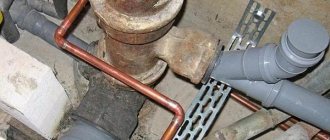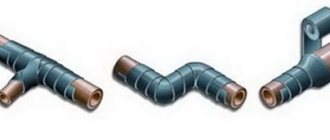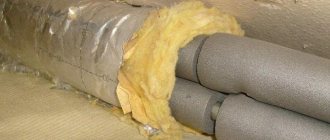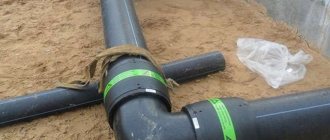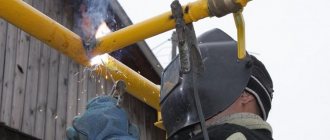Heating radiators in the house require mandatory painting. The best paint for radiators will protect surfaces from adverse external influences and give the room a presentable appearance. From the variety of coating options for pipes and heating radiators, it is better to choose paints and varnishes in accordance with the type of room, operating features, and surrounding design. Basic requirements for paint and varnish materials: durability, reliability of the coating without compromising the integrity of the outer layer during the stated period, resistance to sudden temperature changes, aesthetics, environmental safety without the release of unpleasant odors.
Types of paints for heating radiators
The aesthetics and beauty of painted heating radiators depend not only on the cost of paintwork materials, but also on the correct choice of paint based on its chemical composition. Manufacturers of paints and varnishes produce paints on various bases. When choosing the most suitable option for a particular battery, it is necessary to take into account the positive and negative characteristics of each substance.
Depending on the material used to make radiators, paints are selected from the following categories:
- Oily.
- Water-based.
- Alkyd.
- Silicone.
- Powder.
For the primary coat, glossy paint for heating pipes is recommended. The subsequent re-layer should be matte in order to hide possible defects and unevenness of the metal as much as possible.
The variety of paints suitable for painting radiators is truly surprising. In addition, products are constantly being improved, so it is recommended to study the available catalog and make the right choice.
Instructions for painting pipes
In order for the result to be pleasing and the painting work not to have to be redone, spending extra money and time, it is necessary to adhere to the technology and follow the recommendations of specialists. The quality of preliminary surface preparation often has a greater impact on the durability and aesthetics of the coating than the choice of paint.
Preparatory work
First of all, you need to take care of protecting the floor, walls and surrounding objects. Old newspapers, magazines, oilcloth or construction film are suitable for this. No matter how hard you try to do everything carefully, paint can still drip or splash in the most inappropriate place. Therefore, it is better to play it safe so as not to think later than to remove paint stains.
On a note! Personal protective equipment will be useful for work: gloves, a hat, work clothes that you don’t mind getting dirty. If you use paint with a smell, you will also need a respirator.
Before painting, the surface of the pipes must be cleaned of dust, dirt and old paint. If the previously applied layers of paint are thin enough, adhere well and do not crack, then you can leave them and just get by with sanding them with sandpaper. Areas with rust need to be treated especially carefully. White spirit or any slightly alkaline solution works well for degreasing the surface.
You can get rid of old paint in the following ways:
- Using a special rinsing solution.
A gel-like liquid is applied to the surface and covered with film. After a short period of time, the old coating softens and is easily removed with a spatula, scraper or wire brush. Paint remover has a strong odor and contains aggressive toxic substances, so you must work with extreme caution.
- Using a blowtorch.
The paint heats up and comes off easily under the pressure of a spatula or similar tool. Can only be used when working outdoors.
- Using a hair dryer.
Due to heating, the old coating easily comes off and can be cleaned off with any sharp object. This method is similar to the previous one, only simpler and safer, and can be used in any room. Due to the ability of metal to quickly give off heat, it is not always possible to warm it up well, so in some cases using a hair dryer will be ineffective.
- Using a drill or grinder with a wire brush attachment.
Old paint can be cleaned off quite quickly, but in hard-to-reach places the brush is powerless; you need to use a narrow spatula, knife or chisel.
The best way to remove paint from pipes and radiators depends on the availability of suitable tools and subjective individual preferences. But in any case, the old cracked coating must be removed so that the new one fits well and lasts a long time. Then the surface is degreased, wiped with a damp cloth and dried.
After complete cleaning of all accumulated layers or when dealing with a new uncoated metal surface, an anti-corrosion primer should be applied if the paint does not contain special protective components. In some cases, the ability of the primer to improve adhesion to the substrate is important. If you use 3-in-1 paint containing a rust converter, primer and color pigments, you can immediately begin applying it without prior preparation.
Important! Regardless of the type of paint and varnish material, work should be carried out in a well-ventilated area. Any paint fumes contain substances that should not be inhaled unnecessarily. Therefore, it is recommended to ensure that pets, children and other family members are away from you during painting.
Applying paint
There are several methods to paint pipes:
- With a brush;
- Roller;
- Spray can;
- Spray gun or spray gun.
Applying paint with a brush is the most common and affordable option. No special skills are required. It’s enough just to take a good brush and, picking up a small amount of paint on the tip, spread it evenly, slowly, over the surface. You must strive to make the layer as thin as possible. This will ensure uniform coverage and no smudges. If the paint shows through, it is better to paint it again later than to apply one thick layer.
Advice! Cheap brushes often have bristles that fall out. Therefore, it is not worth saving on their cost. However, even high-quality specimens sometimes leave hairs. If necessary, lint can be removed with a needle.
It is very convenient to paint pipes and batteries using a special radiator brush. It has a long handle and a curved shape that makes it easy to cover all those hard-to-reach areas.
We recommend: The best stoves of 2021 for a Russian wood-fired sauna
Using small-diameter foam rollers, it is convenient to paint an openly located pipeline if there is free space around. They are also suitable for the front surface of heating devices. Craftsmen even make special devices from two rollers, allowing not only to ensure an even application, but also to complete the job very quickly.
Sometimes simple scouring pads are used for smooth pipes, allowing you to apply a neat thin layer on all sides. The gloves will, of course, be dirty, but the painting will be completed in no time.
Working with a spray can is the most convenient and fastest. It must be shaken for a minute and can be sprayed onto the prepared surface. Performing smooth zigzag movements, gradually cover the required area. It is important to maintain the distance recommended by the manufacturer and not stay in one place for too long.
Aerosol cans provide a beautiful decorative finish, but are expensive and do not cover hard-to-reach areas well. In this regard, they are usually applied to a well-primed base or after a preparatory background coat of paint.
A professional spray gun is used quite rarely in everyday life, but if there is a lot of painting work to be done, then it is worth acquiring this device. The sprayer allows you to quickly apply even layers with minimal paint consumption and has special nozzles for ease of working with surfaces of the most intricate shape.
The best oil paints for radiators
Oil paints are no longer in demand, because they usually have a pronounced smell and the result obtained after a short time ceases to be noticeable. The main advantage is the affordable price category.
DekArt MA 15
These products are ideal for painting metal radiators. It is offered in different colors, so the heating device can be painted taking into account the features of the interior. Products are manufactured in Ukraine with mandatory consideration of current standards and basic quality requirements.
Pros:
- a high level of protection of heating batteries from adverse external factors is guaranteed;
- it is possible to give an attractive appearance to the radiator, focusing on the design features of the room;
- It is offered only in bright shades, thanks to which its special beauty is noted.
Minuses:
- At first, there may be a pronounced smell of paint and varnish products.
Oil-phthalic enamel Sniezka Supermal
Suitable for painting steel and cast iron batteries. Recommended for use in public spaces, including medical, educational, industrial. The Polish product has proven itself only from the best side.
Pros:
- increased resistance to adverse atmospheric and mechanical factors;
- optimal consumption, which ensures decent savings;
- the paint layer is particularly resistant to external factors, so long-term preservation of its original condition is guaranteed;
- bright colors, with 23 shades available to choose from;
- compliance with current standards, making the products ideal even for public buildings, including the medical sector.
Minuses:
- not detected.
- Such materials are of high quality, because technologies are gradually improving.
The best water-based paints for radiators
Acrylic paint for heating radiators Radiator Festek
The products are offered by a Ukrainian manufacturer. The type of composition is one-component, but it guarantees increased resistance to the adverse effects of water. Allows you to improve the external condition of heating radiators thanks to a pleasant matte snow-white shade.
Pros:
- absence of any odors;
- increased resistance to water washing and dry abrasion;
- the ability to completely paint heating batteries without further influence of external factors;
- resistance to yellowing;
- the ability to withstand heating up to 95 degrees Celsius;
- minimal drying time, which speeds up the procedure.
Minuses:
- vulnerability to high operational loads
Washable odorless semi-matte paint Remontti Assa Tikkurila
These paint and varnish products are offered by a well-known Finnish manufacturer, which takes into account current standards and successfully produces high-quality modern paints for the further processing of heating batteries.
The composition is created using an acrylate binder. At the same time, the manufacturer refused to use organic solvents. This approach to the creation of paint and varnish products contributed to the receipt of the “Eco-label” of the European Union. The Association of Allergy and Asthmatic Disease Specialists of Finland participated in the development, as a result of which the products are completely safe even for allergy sufferers and asthmatics.
Pros:
- created from high-quality components and modern technologies;
- high level of safety, due to which the use of products is justified in most cases;
- resistance to washing and abrasion.
Minuses:
- very high price, so such products are not available to all potential buyers.
Acrylic enamel for heating radiators Farbex Polisan
The products are offered by the famous Ukrainian manufacturer Polisan, which tries to take into account current standards and offer only high-quality paints and varnishes. It is assumed that it is possible to carry out decorative and protective painting of heating devices.
Pros:
- requires minimal time to dry;
- It has a snow-white hue and a pleasant glossy finish, and the original color remains for a long time;
- optimal adhesion to various types of surfaces is guaranteed;
- there is increased resistance to frequent repeated washing;
- additional treatment with pigment concentrates is available, as a result of which the heating device can fit perfectly into the design of the room;
- no pungent odor;
- The content of volatile organic compounds complies with current standards, therefore the products are recognized as safe.
Minuses:
- the radiator must be thoroughly treated before further painting, and dust, rust, scale, grease and other contaminants must be excluded;
- surfaces that were previously painted with alkyd or oil paint must be carefully treated until matte and degreased;
- preparing paint requires a careful approach and effort, strict adherence to the instructions and certain room conditions (air humidity should not be lower than 80%, and the surface temperature should be from +10 degrees).
- Correct use of paint justifies its choice for further use and successful treatment of used heating radiators.
Paint for radiators Balakryl Radet
The Czech brand Balakryl offers high-quality paint that is ideal for treating heating radiators in modern heating systems of residential and industrial premises.
Pros:
- increased resistance to the adverse effects of water;
- possibility of use in rooms where there is a high level of humidity;
- The heat resistance exceeds 100 degrees, therefore the safety and long-term preservation of the original condition of the heating batteries is guaranteed.
Minuses:
- not identified.
Composition selection
To ensure the best effect from using paint for heating pipes, when choosing a composition in a store, it is better to purchase paint with the inscription “for heating radiators” or a similar mark. Such a coloring mixture will be resistant to high temperatures, and when heated it will not change its color. One of the budget options is PF-115 enamel, which meets almost all the basic requirements given above. Heat-resistant paint KO-168, which has a silicon base, is also very good.
It is better not to use oil paint for pipes heated to high temperatures, since the oil composition will certainly fade or turn yellow after some time. In addition, oil dyes have an unpleasant, persistent odor during painting and drying.
Attention! If you choose paint for metal pipes, it must contain a corrosion inhibitor that will protect the metal surface from moisture in the air. If the composition does not contain such an additive, then before painting, the heating pipes must be coated with a layer of anti-corrosion primer. One suitable primer is lead-lead primer mixture No. 81.
Alkyd enamel for heat-conducting pipes
This enamel consists of alkyd varnish (pentaphthalic, glyphthalic) with the addition of vegetable oils and a solvent (white spirit). It has high elasticity and is quite durable. Currently, these enamels are popular and are used in many areas of painting.
The advantages of alkyd enamels include:
- Affordability.
- Resistance to high temperatures (the range is usually indicated on the packaging of this material).
- Excellent hiding power in a relatively thin layer.
- Ease of application to the product.
- Does not turn yellow during use.
- Increased wear resistance.
- Wide range of colors.
- Availability of aerosol version.
However, alkyd paints have not only advantages. The disadvantages include:
- There is a pungent odor because the composition of these enamels includes white spirit. The smell lasts for several days. It is also possible for it to appear after the first start of the heating system.
- Long time for complete drying (24 -36 hours), which increases the time for painting work.
Alkyd enamel PF-223 is quite suitable as a paint for heating pipes; PF-115 can also be used for heating systems.
Heat-resistant acrylic enamel
Odorless pipe paint is acrylic enamel. Due to the fact that it does not have a pungent odor, this enamel is an ideal paint and varnish material for work carried out inside residential premises. The painted surface becomes absolutely smooth and tactilely resembles plastic.
Since not all acrylic enamels are heat-resistant, when purchasing, you must carefully read the information regarding the temperature range of its use. The minimum value for using these enamels is 80 ºС.
A significant advantage of these paints is their drying time - for the first layer the value ranges from ten minutes to one hour, and from one to two hours for the second. To achieve a high-quality result, it is necessary to prime the surface to be painted. When carrying out work, it is necessary to avoid contact with moisture on the surface to be painted.
The consistency of acrylic resembles medium-thick sour cream; it does not spread, which eliminates the possibility of smudges. As stated above, this enamel should be applied to a previously primed surface in two layers. Violation of painting technology entails a significant deterioration in its quality.
The only drawback of using this material is its low resistance to mechanical loads.
Silicone and powder paints for metal
These two types of paints are the most resistant to high temperatures.
We recommend: Do-it-yourself hydrogen generator - diagram, installation design, drawings
If the heating system is systematically exposed to overheating, then silicone paint is exactly what you need to paint the heating pipes with. After all, this coating is guaranteed to withstand heating up to 350 ºС. This paint consists of silicone resin with the participation of aqueous solvents. Semi-matte shine is a characteristic feature of the dried layer of this paint.
Silicone paint is unpretentious when painting - it does not require priming and is applied directly to the metal. Resistant to external influences. Durable. The disadvantages include the high price.
Powder paint is the most stable and durable of paints and varnishes at present. Used in industrial conditions.
The best alkyd paints for heating radiators
Tikkurila Empire
The paint is offered by a well-known Finnish manufacturer. A ready-made concentrate and a special thinner, white spirit, are used. Alkyd paint is semi-matte and high quality.
Pros:
- there is no risk of the slightest smudges when painting radiators;
- optimal adhesion to metal pipes is guaranteed;
- even the slightest odor is eliminated;
- there is the possibility of painting heating devices in the desired colors and shades;
- The paint layer is easily and quickly applied.
Minuses:
- requirements for indoor conditions (temperature should be from 5 degrees Celsius, air humidity – from 80%);
- thorough preparation of the radiator is required for further successful painting;
- relatively high consumption of the finished solution (10-12 liters per square meter).
SADOLIN MASTER 30
The Swedish manufacturer offers high-quality alkyd paint for metal batteries. The paintwork will have a semi-matte, pleasant shine.
Pros:
- guaranteed protection of the surface from rotting, corrosive changes, mildew and mold;
- even the slightest smudges are eliminated when treating batteries with paint;
- there is increased resistance to atmospheric influences;
- provides abrasion resistance;
- fits perfectly on almost any surface;
- can be painted in any color and shade.
Minuses:
- has a smell (weak, but you will need to ventilate the room after the event);
- high price.
Professional Gloss JOHNSTONE'S
High-quality paint from a British manufacturer is ideal for working with metal heating devices. The product is based on a durable alkyd resin that helps create a durable coating.
Pros:
- creating an ideal paint coating;
- pleasant shine due to the special texture of the paint;
- increased resistance to adverse external factors: temperature, shock.
Minuses:
- high price.
When choosing paint, it is advisable to take into account the features of its composition and main characteristics.
- Oil paints are offered at affordable prices. In addition, their range surprises with its diversity. You need to prepare for a long drying time and an unpleasant odor.
- Acrylic paints dry quickly and are odorless. However, the perfect color is not always obtained.
- Alkyd paints have increased resistance to high temperatures and adverse mechanical factors. However, when painting, there is a pronounced smell. In addition, it takes a long time to dry.
- Heat-resistant paints are ideal for hot batteries, because they do not turn yellow and can withstand even the highest temperatures.
There are a variety of battery paints available these days, so it is important to carefully review the available products, their features, pros and cons. By choosing the right paint and taking into account the basic recommendations when applying it, you can count on successfully updating the condition of your heating radiators.
How to paint pipes: types of materials and leading manufacturers
Alkyd enamel “Heizkorperlack” from Germany. The main advantage of the paint is high-quality painting when the heating system is turned off. This paint is white, glossy and can withstand temperatures above 180°C.
"Radiator Paint"
Paint from Holland, developed on the basis of acrylic dispersion. The main advantage of this paint is the absence of a pungent odor. Achieving this result is due to the presence of only a small amount of solvents. This enamel is white in color and can withstand temperatures reaching above 90°C. When applying the first layer of Radiator Paint, it is allowed to be diluted with water. Please note that you can only turn on the heating after painting after 3 days.
Heat-resistant anti-corrosion German material "Mipatherm 600" (Mipatherm 600). Enamel from this manufacturer is used mainly for painting metal grates of fireplaces, ovens, grilling equipment, and heating pipes. A primer for pipes is not required when using Mipaterm 600. This paint has an aluminum, matte or gray tint. There is no need to dilute it. Despite exposure to high temperatures above 600°C, the enamel will not change its color and original appearance. This paint must be applied 2 times in a row, and you can turn on the heating after 3 hours have passed after the painting process.
Swedish alkyd enamel “Elementfarg Alkyd”
This manufacturer produces products at a very high level of quality. This material has a gray or white tint, and can withstand temperatures reaching 100°C. This enamel should be used as a primer and also as an enamel for final painting. When painting, the heating system must be completely turned off. Do not use Swedish alkyd paint on electric heaters as electric heaters get too hot.
“Radiator” - alkyd enamel
You can use UNIT and UNIT SPRAY thinners together with it. It should be noted that this type of paint may become more yellowish over time due to prolonged exposure to high temperatures. You need to paint heating pipes with this paint 2 times using a brush or sprayer. You can dilute it, but do not add more than 5% of its total volume. It is recommended to use “Radiator” paint for painting metal pipelines and radiators. The main advantage of paint is that it is easy to clean.
Primer enamel "UNIPOL® T-mark"
This material is chemically resistant and is intended for painting heating pipes. This is an enamel ready for painting radiators and any equipment designed to heat up to 200 degrees. This enamel is characterized by a white color and a matte shiny surface. The durable UNIPOL primer enamel has many advantages: it can be diluted with solvent, toluene or xylene up to 15% of its total volume. Painting is usually only necessary if the heating system is turned off. Experts recommend applying this type in 3 layers.
ultra-term.ru
Which battery paint is best to buy?
After reading the rating article, it becomes clear that radiators cannot be painted with the first paint you come across. Heat-resistant coatings must be used for heating pipes and radiators.
In order not to make a mistake in choosing the right paint and varnish material suitable for specific conditions, you need to familiarize yourself with the labeling and chemical composition of the selected product. The owner of the apartment decides which paint for pipes and radiators is best suited for a given room. At the same time, it doesn’t hurt to read the recommendations of experienced specialists and user reviews.
How to paint pipes: secrets of effective repair
It is recommended to paint all elements of the heating system during the non-heating season. Painting a hot surface can result in smudges, stains and other defects, the elimination of which will require emergency repairs.
Preliminary preparation
Before painting heating pipes with the chosen enamel, the surface must be thoroughly cleaned of the old coating. This dirty but simple work is carried out in several stages:
- Using a stiff brush, clean the pipes from dirt accumulated during operation, while simultaneously checking how firmly the existing coating holds.
- There is no point in removing old paint completely if it adheres well to the surface and does not have unsightly smudges. In this case, it is enough to remove the surface glossy layer to improve adhesion. Areas where the decor is cracked can be easily cleaned with a wire brush. To speed up the process, you can use special washes.
- The prepared pipe is thoroughly cleaned of small particles, and in the kitchen the surface must be washed with water with the addition of a fat-dissolving cleaning solution.
- Before painting heating pipes, they are treated with a metal primer with anti-corrosion additives. It is important that the primer matches the type of paint! To avoid mistakes, it is recommended to choose products from one manufacturer and study the information on the packaging.
The main stage of coloring
It is most convenient to paint pipes using a narrow brush. First, paint the most inaccessible areas facing the wall, and then process the front side. The paint and varnish composition is applied in a thin layer, achieving a uniform and smooth coating. The second layer is applied after the first has completely dried.
It is not necessary to choose snow-white shades. Bronze, gold and silver pipes, as well as those painted to match the walls, look impressive. Using stencils, it is easy to decorate the elements of the heating system with flowers, leaves or other patterns.
For homeowners who don’t want to rack their brains over what to paint heating pipes and how to decorate them, we recommend turning to professionals. Armed with theoretical knowledge, it will be easier to control their work.
teploguru.ru
